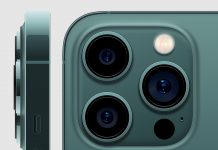It’s time to step up your photography game in time for the holiday.
Next week, millions of people will stare into the night sky as it’s lit up by colorful bursts of fire. Fireworks are a staple of celebrating America’s independence, and capturing photos of those fireworks has become part of the experience. The Fourth of July provides an annual chance to test our phone photography skills. (Not to mention, take advantage of July 4 sales.)
Whenever bright lights, such as fireworks, streak across an otherwise dark landscape, it becomes difficult to consistently capture the shot.
Apple’s iPhone lineup, along with Android phones from the likes of Google or Samsung, all capture really good low-light photos with ease. Some Android phones even have dedicated shooting modes for taking pictures in the dark, which will definitely help with your firework photos.
If you’re struggling to get the shot you want, don’t get frustrated! Keep practicing. Try different apps, use different accessories and most importantly: keep shooting. We also have some tips for those who plan on using a dedicated camera to capture photos of fireworks.
Don’t wait until it’s dark to get ready
Before it gets dark and the fireworks start flying, plan out where you’ll be snapping pictures from. Try to find a spot, free of trees, streetlights and people that will be in the frame. Use the Camera app’s viewfinder on your phone to get a better idea of what will — and won’t — fit in the photos.

Center Line Media
Disclosure: CNET may get a share of revenue from the sale of the products featured on this page.
Some accessories that will help
No matter how steady your hands are, holding your phone still while capturing a time-lapse or long-exposure picture without ruining the shot is almost impossible. You may get weird looks at first, but having a tripod or monopod for your phone will result in better photos, no matter the situation. Joby’s HandyPod Mobile is a solid choice.
Using a remote shutter will help eliminate shaky photos as well. You can use a pair of wired headphones (assuming your phone still has a headphone jack) and press the volume-up button when the Camera app is open. To be clear, you don’t have to actually wear the headphones, they just need to be connected to your phone. Siri, Google Assistant and Bixby all have voice commands to take a photo, but you give up some of the control that we’ll cover below — not to mention if you’re in a loud, crowded environment, voice commands won’t work all that well.
If you wear an Apple Watch ($384 at Amazon), you can use the built-in Camera app as a remote shutter, complete with shot previews right on your wrist.
If you don’t have a headphone jack, you can use a Bluetooth shutter button like this, or if you plan on getting a tripod, Joby bundles one with the HandyPod Mobile Plus.
To really up your mobile photography game, attach third-party lenses to your phone. Olloclip and Moment each have a wide range of lenses for different phones. Use a fish-eye lens for a unique look, or a wide-angle lens if you’re using an older phone that doesn’t have multiple camera lenses already built in.

Jason Cipriani/CNET
Experiment with different camera modes
Once you have your spot picked out and it starts getting dark, begin experimenting with the various camera modes in your phone’s camera app. For example, using the Time-Lapse mode to capture everyone getting settled in before the show begins is a fun video to share on Instagram.
If you own a Google Pixel ($214 at Amazon) or Huawei P30 ($560 at Amazon), the camera app includes a mode dedicated for capturing photos in low-light environments. As it begins to get dark, begin testing out the night mode on your phone, and keep in mind that some light is required for best results when using Night Sight (on the Pixel) and similar camera modes.
Use Panorama mode and get creative. Instead of scanning across the horizon, turn your phone to the side and take a vertical panorama. Start with the ground, and end in the sky where the main show is taking place.
Pretty much every phone can take multiple photos in succession just by holding down the shutter button. Burst mode comes in handy when you want to capture a specific shot but you’re worried about getting the timing just right.

Juan Garzon/CNET
Use all the lenses
Phones like the iPhone XS Max ($1,100 at Amazon) and Samsung Galaxy S10 ($800 at Walmart) have multiple lenses on the back of the phone. Some lenses, like in the iPhone XS Max, are used to zoom in. The Galaxy S10 has three different cameras on the back, one of which takes pictures with an ultra-wide angle.
Phones that have more than one camera on the back typically have a series of buttons just above the shutter button to switch between the various lenses. For example, an iPhone has a circle with “1x” inside it; tap that button switch to the 2x camera. The Galaxy S10 has three icons: Three trees for ultra-wide, two trees for normal shots, and one tree for the telephoto lens.
Moving between the various lenses on your phone will give vary the photos and give you more creative options.
Make smart use of camera apps
There are a lot of apps that add to a phone’s camera capabilities for capturing the shot. For example, the iOS app Slow Shutter Camgives you the proper settings to take long-exposure photos. Android users can use Camera FV-5 to take long-exposure shots up to 30 seconds.
After taking a picture, apps like Adobe (iOS | Android) Lightroom and VSCO (iOS | Android) add editing tools and features outside of the typical Instagram filters.
Again, the most important part of capturing pictures you’re proud is to keep trying and experiment with different shooting modes. Have fun and good luck!
Published June 28, 2019.
Update, June 29.












































